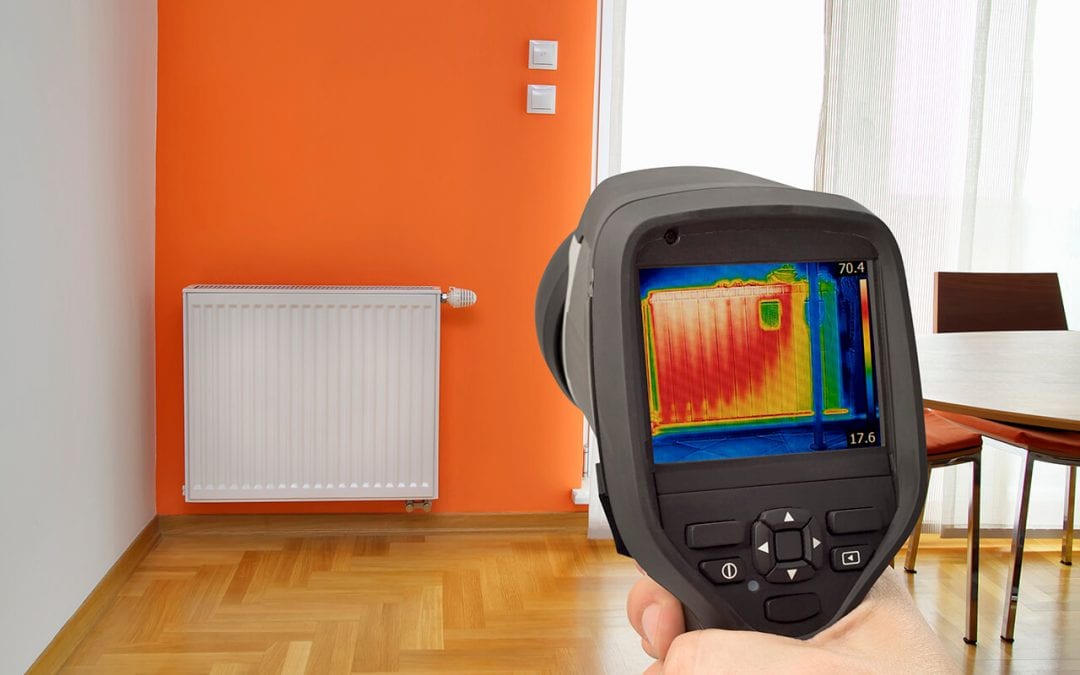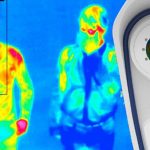Thermal imaging, also known as infrared thermography, is a technology that uses heat signatures to produce images. It’s often used in home inspection to help identify potential areas of water damage or leaks, insulation issues, and electrical problems.
How does it work? Thermal imaging cameras detect Infrared radiation (heat) and convert it into an electronic signal. This signal is then processed to create a thermal image or “heat map” that shows the relative temperature of different objects in the scene.
Infrared radiation is emitted by all objects above absolute zero (-273°C), but we can only see a small portion of this spectrum with our eyes. Thermal imaging cameras allow us to see this invisible radiation, which can be very useful for identifying potential problems around the home.
For example, a water leak under a sink might not be immediately apparent, but a thermal image could reveal heat signatures that indicate moisture or even mold growth. Similarly, an insulation issue in an attic might not be obvious to the naked eye, but it would be clearly visible as a “cold spot” on a thermal image.
Thermal imaging is non-invasive and completely safe, making it an ideal tool for use in home inspection. It’s also relatively quick and easy to use, which means that inspectors can often get a better idea of the condition of a home in less time than if they were relying on visual inspection alone.
If you’re thinking of hiring a home inspector, be sure to ask if they use thermal imaging and if there will be an additional charge for this service.
The benefits of using thermal imaging during a home inspection
Thermal imaging can be a valuable tool for home inspectors, as it can help them to identify potential problems that might not be immediately apparent.
Some of the benefits of using thermal imaging during a home inspection include:
* Thermal imaging can help to reveal hidden water damage or leaks.
* It can also help to identify insulation issues and electrical problems.
* Thermal imaging is non-invasive and completely safe.
* It’s quick and easy to use, which means that inspectors can often get a better idea of the condition of a home in less time.
If you’re thinking of hiring a home inspector, be sure to ask if they use thermal imaging and if there will be an additional charge for this service.
How thermal imaging can help identify potential problems with a home
Thermal imaging can be a valuable tool for home inspectors, as it can help them to identify potential problems that might not be immediately apparent.
Some of the ways in which thermal imaging can help identify potential problems with a home include:
* Thermal imaging can help to reveal hidden water damage or leaks.
* It can also help to identify insulation issues and electrical problems.
* Thermal imaging is non-invasive and completely safe.
* It’s quick and easy to use, which means that inspectors can often get a better idea of the condition of a home in less time.
If you’re thinking of hiring a home inspector, be sure to ask if they use thermal imaging and if there will be an additional charge for this service.
How to find a home inspector who uses thermal imaging
If you’re looking for a home inspector who uses thermal imaging, there are a few things you can do:
* Ask around – friends, family, and colleagues may be able to recommend an inspector who uses this technology.
* Look for an inspector who is certified by the International Association of Certified Home Inspectors (IAC2). This organization requires its members to use thermal imaging in their inspections.
* Check out online directories such as Angie’s List or HomeAdvisor. These websites allow you to search for inspectors in your area and read customer reviews.
* Once you’ve found a few potential inspectors, be sure to ask if they use thermal imaging and if there will be an additional charge for this service.
Thermal imaging can be a valuable tool for home inspectors, as it can help them to identify potential problems that might not be immediately apparent. If you’re thinking of hiring a home inspector, be sure to ask if they use thermal imaging and if there will be an additional charge for this service.
What to expect from a thermal imaging inspection
If you’re thinking of hiring a home inspector who uses thermal imaging, there are a few things you can expect from the inspection:
* The inspector will use a special camera to take pictures of the outside and inside of your home.
* The inspector will look for any areas of concern that show up as “cold spots” on the thermal images.
* The inspection should take no longer than 2-3 hours.
* After the inspection, the inspector will provide you with a report that details any areas of concern that were found.
If you have any questions about what to expect from a thermal imaging inspection, be sure to ask your inspector before the inspection takes place.


